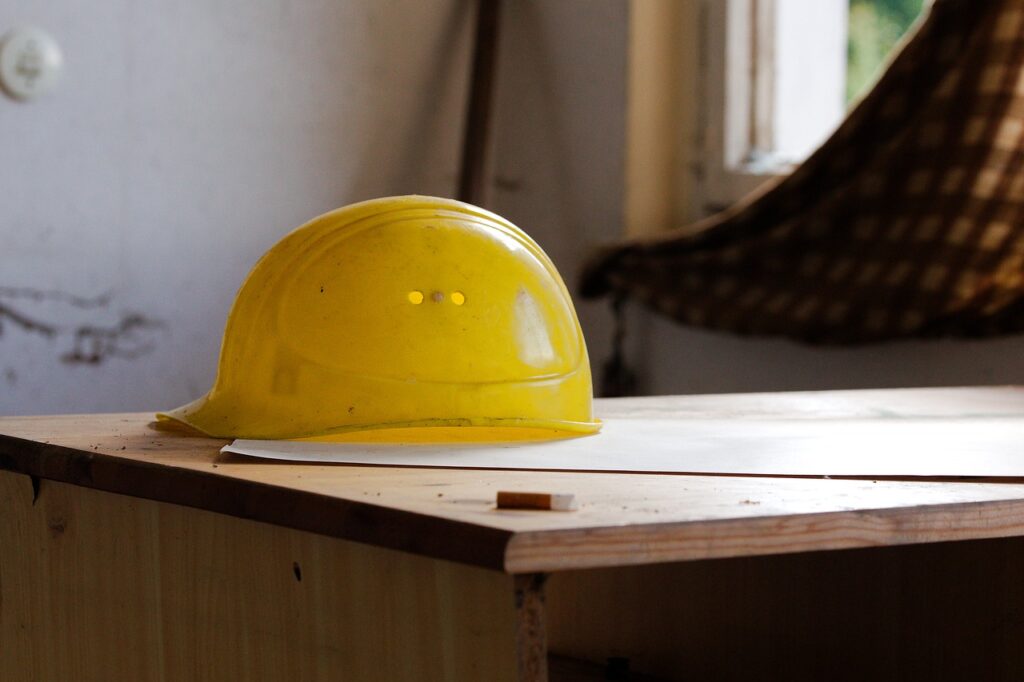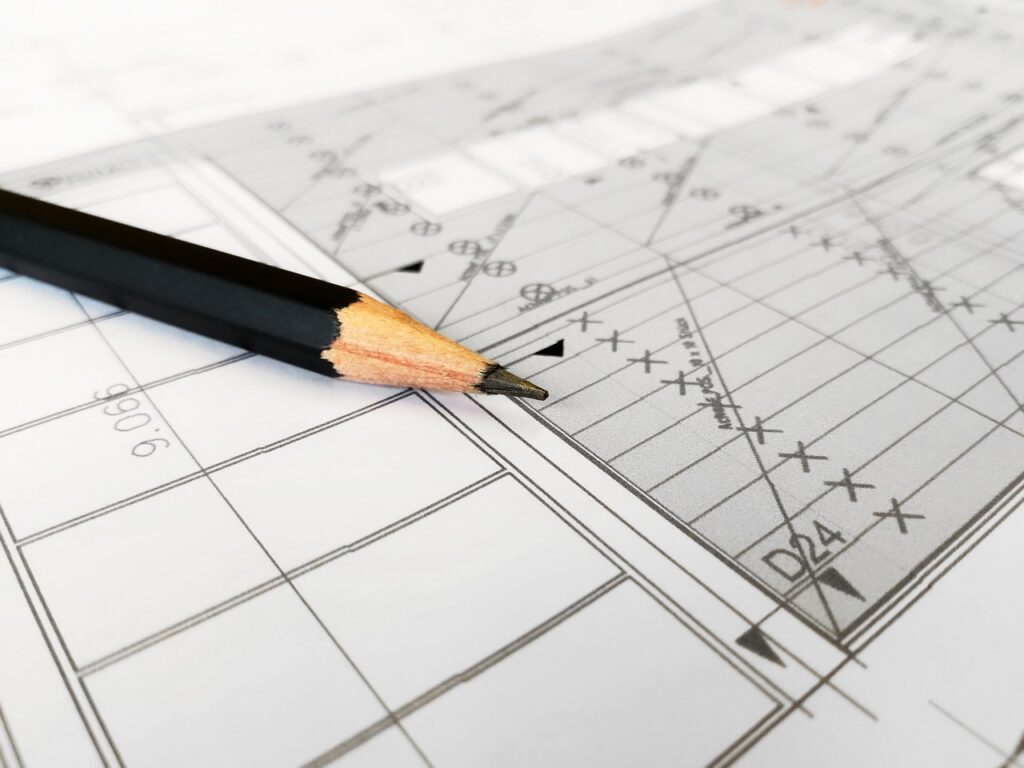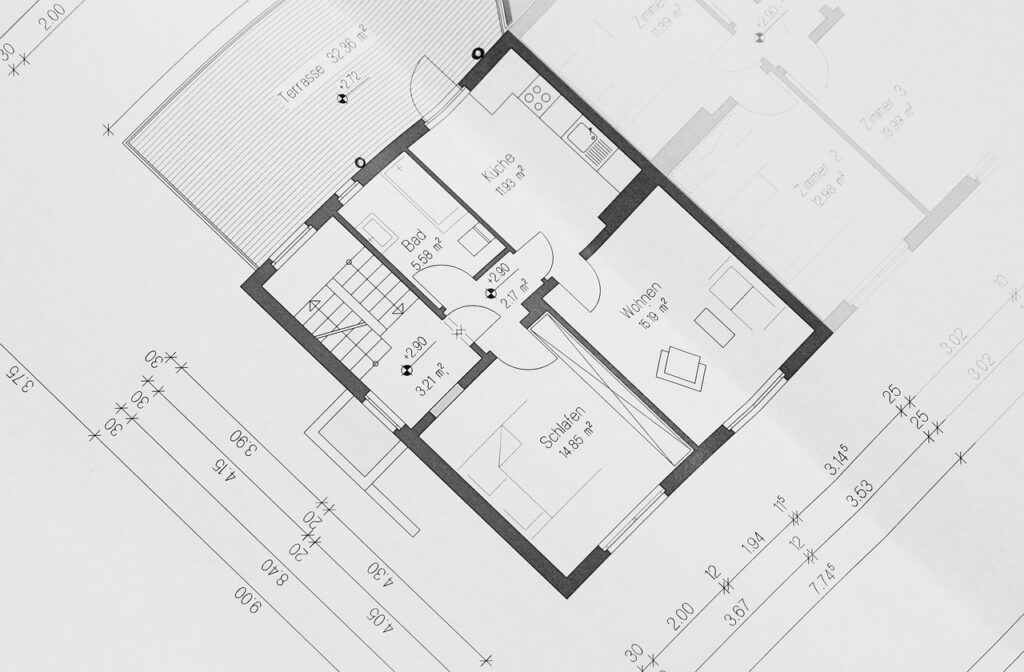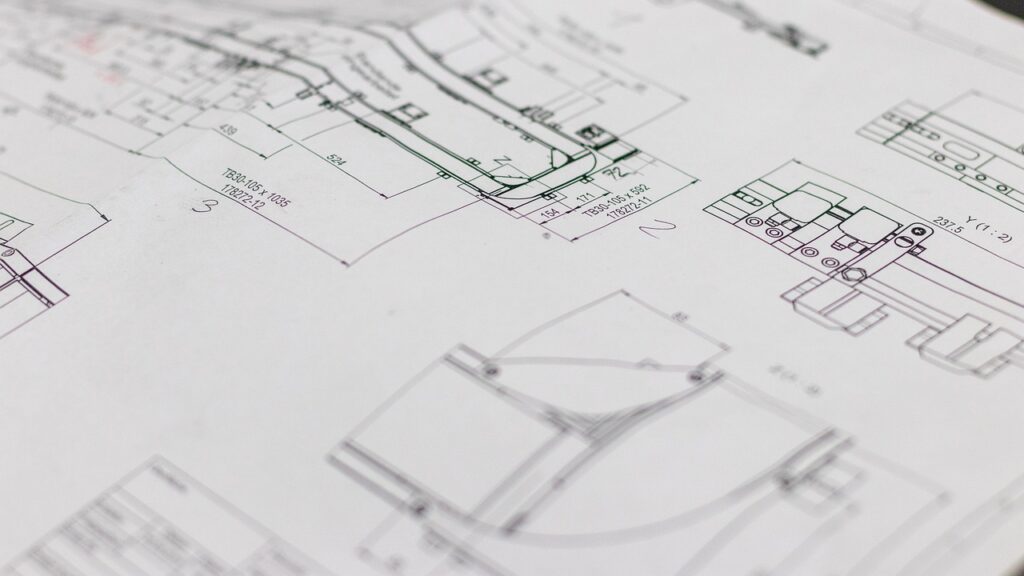Meeting deadlines and staying within budget are often the most stressful aspects of any construction project. When timelines extend or costs exceed expectations, the impact can be profound—not only leading to financial strain but also damaging trust with stakeholders and jeopardizing the success of the project. However, these challenges can be effectively mitigated with the right approach. Through detailed planning, clear communication, and diligent project management, the risks of delays and budget overruns can be minimized.

For construction managers, developers, and property owners, mastering the ability to manage time and costs is crucial. Whether you’re overseeing a small-scale residential build or a large commercial project, having a strategic approach is key to ensuring smooth execution and a successful outcome.
In this article, we will break down actionable strategies that focus on how to manage deadlines and costs in construction projects. By understanding the importance of realistic budgeting, proper scheduling, and continuous monitoring, you can avoid common obstacles and complete your project within the designated timeline and financial plan.
Setting a Realistic Budget from the Start
The foundation of cost management in any construction project is creating a realistic budget that reflects the true scope and complexity of the project. Underestimating costs in the initial stages is a common mistake that can lead to severe budget overruns. Ensuring that every aspect of the project is financially accounted for right from the beginning sets the stage for success, avoiding unpleasant surprises as the project progresses.
Itemizing Costs for Transparency
One of the most effective ways to create a realistic budget is by itemizing every potential cost involved in the construction process. This includes direct costs such as labor, materials, and permits, as well as indirect or soft costs like legal fees, insurance, and design fees. By breaking down costs into specific categories, you ensure transparency and reduce the risk of unexpected expenses creeping up later in the project.
Each category should be thoroughly researched and carefully considered. For example, if materials or labor costs are subject to market fluctuations, such as rising prices for concrete or steel, it’s essential to factor those variables into your estimates. By accounting for possible price changes or shortages, you create a budget that’s adaptable to shifts in the market.
Overlooking smaller expenses is another common pitfall, but itemizing even the less significant costs ensures a comprehensive understanding of where funds are going, helping to track expenditure more efficiently throughout the project’s life cycle.
Including a Contingency Fund
No matter how meticulously a budget is planned, unforeseen issues are bound to arise in any construction project. That’s why including a contingency fund is crucial. It’s recommended to allocate around 10-15% of the total project cost for contingencies. This reserve serves as a safety net for unanticipated costs such as material shortages, inclement weather causing delays, or unexpected changes in the design.
A contingency fund also provides flexibility, allowing the project to adapt without compromising quality or experiencing prolonged delays. By proactively including this financial cushion, construction managers can navigate challenges with confidence, ensuring that minor setbacks don’t escalate into major budget crises.
Detailed Project Planning and Scheduling
Effective project management starts with a detailed plan and schedule that outline each phase of the construction process. By creating a well-structured timeline, teams can identify potential delays early and ensure that all tasks are completed on time. Detailed planning provides clarity for everyone involved, helping to avoid miscommunication and ensuring that all resources are utilized efficiently.

Establishing Milestones
Breaking down the project into clear, manageable milestones is key to maintaining steady progress. Each milestone serves as a checkpoint that allows project managers to assess progress, address any emerging issues, and keep the team focused. For example, milestones could include significant stages like securing permits, completing the foundation, or finishing key structural elements like roofing and electrical systems.
By setting realistic deadlines for each milestone, teams can avoid the pressure of last-minute rushing and make necessary adjustments before smaller problems escalate. These milestones should be tied to the overall project timeline and linked to the budget, providing a comprehensive view of both time and financial resources. This approach also allows stakeholders to see measurable progress, which keeps everyone motivated and aligned.
Using Project Management Software
Modern construction projects greatly benefit from using project management software such as Procore, CoConstruct, or Buildertrend. These tools not only help monitor deadlines and manage resources but also track costs and streamline communication. Project management software offers real-time updates, providing a clear picture of how the project is progressing and flagging potential delays before they occur.
By using these tools, project managers can quickly adjust schedules, update timelines, and manage workflows, ensuring that the project stays on track. Moreover, documenting changes and revisions through the software can prevent misunderstandings that might lead to cost overruns or delays. This real-time visibility into the project ensures that the team is always working with the latest information, reducing the risk of errors and keeping everything on schedule.
Managing Labor and Resources Efficiently
Effective management of labor and materials is crucial to keeping construction projects on track and within budget. Delays often occur when there is poor coordination of workers or when materials aren’t available at the right time. To ensure success, careful planning and timely procurement are essential.
Coordinating Labor Resources
Proper coordination of labor is critical to preventing downtime and avoiding budget overruns. Labor costs are among the highest expenses in any construction project, so minimizing wasted time is vital. Start by hiring skilled workers and subcontractors who have a track record of meeting deadlines and delivering quality work. Clearly define the roles of each team member and make sure that everyone is on the same page regarding project milestones.
Holding regular site meetings helps ensure that everyone is aligned on the project’s current phase and the upcoming tasks. These meetings provide an opportunity to address any potential bottlenecks or challenges before they escalate into costly delays. By creating a culture of clear communication, you can avoid miscoordination between teams and ensure that all parties are working towards the same goals.
Procuring Materials Early
Material shortages and shipment delays can cause significant setbacks in a construction project, often bringing work to a halt. To mitigate these risks, it’s essential to procure materials well ahead of time. Developing strong relationships with suppliers can help ensure that your materials are delivered on schedule, even during busy periods. Moreover, negotiating fixed prices early in the project helps protect against cost fluctuations due to market changes, keeping your budget in check.
A key strategy is to order critical supplies in bulk or well in advance of their use to ensure that there are no unexpected shortages. This also includes having backup suppliers ready in case of unforeseen delays. Proactive procurement planning is fundamental to maintaining a smooth workflow and avoiding the disruptions that can arise from supply chain issues. By ensuring that both labor and materials are efficiently managed, you minimize downtime and keep the project moving forward according to plan.
Monitoring and Adjusting During Execution
No matter how detailed the initial plans, unforeseen challenges often arise during the execution phase of a construction project. Consistent monitoring and the ability to adjust on the go are key to ensuring deadlines are met and costs are controlled. By actively overseeing progress, project managers can quickly identify problems and prevent minor issues from spiraling into significant setbacks.
Conducting Regular Site Inspections
Frequent site inspections are one of the most effective ways to keep a construction project on track. These inspections allow project managers to observe the work firsthand, ensuring that everything is proceeding according to plan and that high standards of quality control are being maintained. During inspections, managers can identify potential issues—such as delays, safety concerns, or deviations from the original designs—early, allowing for quick corrective actions.
By documenting the findings from each site inspection, the project team can stay aligned on the necessary changes. Sharing this information across teams ensures transparency and accountability. Addressing concerns before they escalate helps to avoid costly rework, which could otherwise delay the project timeline and increase overall expenses. Regular inspections are especially important for managing labor efficiency and ensuring that safety protocols are being followed, as non-compliance could lead to both delays and legal complications.
Tracking Time and Costs
One of the most important aspects of construction management is continuously tracking both time and costs. Monitoring these factors in real-time gives project managers the insight needed to make timely adjustments to the schedule or budget. Effective time-tracking tools help to ensure that the project stays on pace, while cost-monitoring tools can identify budget overruns before they become unmanageable.
Tracking indirect expenses, such as equipment wear or administrative costs, alongside direct expenses like materials and labor, provides a more accurate view of the project’s financial health. When deviations from the plan are detected—whether it’s a delay in delivery of materials or higher-than-expected labor costs—it’s essential to address them immediately. This may involve reallocating resources, negotiating with suppliers, or even adjusting the scope of the project.
Making timely adjustments based on these real-time insights ensures that the project can continue moving forward without further disruption. By keeping a close eye on progress and finances, construction managers can ensure that any delays or cost increases are swiftly corrected, minimizing the overall impact on the project’s success.

Effective Communication with Stakeholders
Clear and consistent communication with all stakeholders—including clients, contractors, architects, and suppliers—is crucial to the success of any construction project. Poor communication can lead to misunderstandings, costly errors, and project delays, while a well-coordinated communication strategy helps ensure that everyone is on the same page and working toward the same goals.
Setting Clear Expectations
At the outset of the project, it is essential to establish clear expectations with all stakeholders. This includes defining deadlines, outlining budget constraints, and identifying potential risks that may arise during the course of construction. By doing this from the start, you create a shared understanding of the project’s goals and the responsibilities of each party.
Regular updates are key to maintaining alignment throughout the project. Whether through in-person meetings, video calls, or project management platforms, frequent check-ins ensure that all stakeholders are informed of the project’s progress and any adjustments that need to be made. Using project management software can help centralize communication and make tracking updates easier, ensuring that everyone remains on the same page.
Establishing a strong foundation of communication from the very beginning helps prevent misunderstandings and disputes later in the process. When expectations are clear, teams can collaborate more effectively, ensuring that deadlines are met and costly change orders are minimized.
Handling Change Orders
Change orders—modifications to the original scope of work—are a common occurrence in construction projects. However, without a well-defined process for managing these changes, they can easily cause delays and increase project costs.
To avoid these disruptions, set up a clear procedure for handling change orders. This should include defining who has the authority to approve changes, how these adjustments will affect the budget, and what the timeline for implementing them will be. It’s important to ensure that any changes are documented in real-time using construction management software so that all team members are aware of the revisions and how they impact the project as a whole.
By streamlining the change order process and keeping all stakeholders informed, you can mitigate the impact of any changes on the project’s timeline and budget. This not only helps keep the construction on track but also fosters transparency and trust among stakeholders.
Leveraging Technology and Expertise for Efficient Project Management
At Heveatecture, we understand the critical importance of managing deadlines and costs in every construction project. Whether it’s a luxury villa or a large-scale commercial development, keeping projects on track is essential for success. To achieve this, we combine advanced project management tools with deep local expertise to ensure efficient execution from start to finish.
Real-Time Monitoring and Communication
One of the key ways Heveatecture supports clients is through real-time monitoring. Our team provides clients with regular updates on project milestones, budget adjustments, and any unforeseen changes, ensuring complete transparency throughout the construction process. We use a combination of drones, on-site video reporting, and detailed progress reports to keep clients informed no matter where they are in the world.
Clear communication between contractors, project managers, and clients helps us anticipate potential issues before they become delays or budget overruns. By addressing challenges early on, we minimize disruptions and maintain a steady workflow, keeping the project on course.
Anticipating and Mitigating Risks
At Heveatecture, we pride ourselves on being proactive in anticipating potential risks that could impact timelines or project budgets. Our team conducts thorough site assessments and collaborates closely with engineers, architects, and contractors to identify any obstacles that could lead to delays. Whether it’s managing labor resources efficiently or securing permits in advance, our goal is to keep projects running smoothly while adhering to the established timeline and budget.
By combining cutting-edge technology with the craftsmanship and dedication of our team, Heveatecture ensures that each project is executed with precision, delivering outstanding results for our clients.

Conclusion
Successfully managing deadlines and costs in a construction project is a delicate balance of thorough planning, efficient resource management, and open communication. By setting realistic budgets with detailed cost breakdowns, creating a well-structured schedule with clear milestones, and implementing modern project management tools, construction teams can avoid the pitfalls that often lead to delays and budget overruns.
Consistent monitoring, a flexible approach to adjustments, and clear communication with all stakeholders are essential to ensuring that a project stays on track. Whether dealing with unexpected costs or handling change orders, having strong management processes in place will ensure that the project progresses smoothly and meets its objectives—on time and within budget.
FAQ
Budget overruns often occur due to unforeseen costs, such as design changes, material price fluctuations, or delays caused by poor planning or weather-related issues.
Proper planning, setting realistic milestones, ordering materials in advance, and using project management software to monitor progress can help prevent delays.
A contingency fund accounts for unexpected expenses, such as material shortages or design revisions, ensuring that your project stays within budget even if issues arise.
Project management software provides real-time updates, tracks costs, schedules tasks, and improves communication among stakeholders, making it easier to manage large projects effectively.
Establish a clear process for handling change orders, including designating who can approve changes and how costs and timelines will be adjusted.
Regular site inspections help identify potential problems early, ensuring that issues are resolved before they cause costly delays or rework.
Monitor costs closely, use detailed estimates, track expenditures in real-time, and adjust for any deviations quickly to keep the project within budget.
A project manager ensures that all tasks are coordinated, resources are allocated correctly, and schedules are maintained, preventing delays and ensuring smooth execution.
To manage labor shortages, ensure early coordination with subcontractors, communicate timelines clearly, and have backup plans in place for hiring additional labor if necessary.
Setting milestones helps track progress, ensures that all phases are completed on time, and allows for adjustments before larger problems arise.
